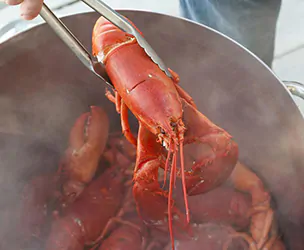Although crabs and lobsters look different, they share a common physiology. All crustaceans have bilaterally symmetrical bodies covered with a thick exoskeleton. Like other arthropods, adult crustaceans have segmented bodies and jointed legs. The segments are usually grouped into a recognizable head, thorax, and abdomen. The head bears two pairs of antennae, usually one median eye and two lateral eyes, and three pairs of biting mouthparts – the mandibles and two pairs of maxillae.






Although crabs and lobsters look different, they share a common physiology. All crustaceans have bilaterally symmetrical bodies covered with a thick exoskeleton. Like other arthropods, adult crustaceans have segmented bodies and jointed legs. The segments are usually grouped into a recognizable head, thorax, and abdomen. The head bears two pairs of antennae, usually one median eye and two lateral eyes, and three pairs of biting mouthparts – the mandibles and two pairs of maxillae.


Do Crabs Feel Pain?
There have been numerous independent Scientific Studies over many years carried out by respected scientists at world re-known Universities such as Bristol University, Glasgow University, Queens University Belfast, University of Bergen in Norway - to name but a few - and many others undertaken by EFSA (European FOOD Safety Authority) and other Authorities - which clearly and unambiguously lead to the conclusion that the higher Decapod Crustaceans such as Lobster, Crabs, Langoustines and Crayfish are sentient animals which can feel pain and suffer distress unless rendered unconscious before cooking. It is based on that research that a number of governments, such as New Zealand, Switzerland, a number of States in Australia and regions in Italy have introduced legislation which recognises their sentience and affords them protection against inhumane treatment, such as being cooked whilst still conscious.

